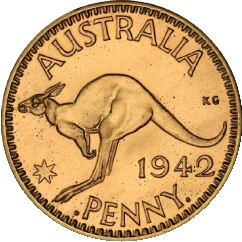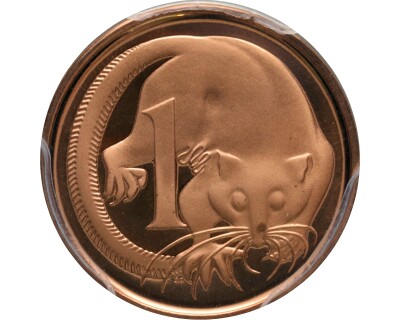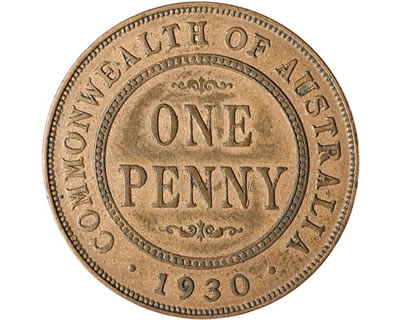Australian 1942 and 1943 Bombay Mint Penny and Half Penny
Introduction


During wartime, the demand for pennies and half pennies increased immensely due to pay requirements of Australian and American forces within Australia (The Argus, 1942). However, the availability of metals, especially copper and silver used for coins, was in shortage due to it being used for the war effort for munitions. Moreover, people were continuing to hoard silver and copper coins in money boxes for fear of instability resulting in banks running out of coins to function their day-to-day routine (Warwick Daily News, 1942).
The shortage continued to become prominent and Australia was in need of help for the production of coins like their pennies and half pennies. Like in World War I, this was provided by India where copper coins were produced with the Royal Mint in Melbourne supplying the master dies. The striking of coins at foreign branches of the Royal Mint was quite common with Australia supplying neighbouring countries in the Pacific and New Zealand (The Central Queensland Herald, 1942).
While during World War I the Calcutta mint struck Australia's copper coins, in 1942 and 1943 it was the Bombay mint that assisted by striking 6 million half pennies and 9 million pennies each year. This was in addition to nearly 40 million half pennies and over 34 million pennies already produced at the Melbourne and Perth mints.
In 1965, the 1942 half penny was produced again in India but this time as proof coins for collectors costing $3 each at that time. Though the contract given to India to mint the 1942 and 1943 half pennies already expired, the die cast remained in India and was not returned to either Australia or England allowing them to produce for collectors looking for the coins in better condition (The Canberra Times, 1966a).

Though the first collectors believed the coins were legal, after a few months the Australian Government requested for the practice to be discontinued (The Canberra Times, 1966b).










